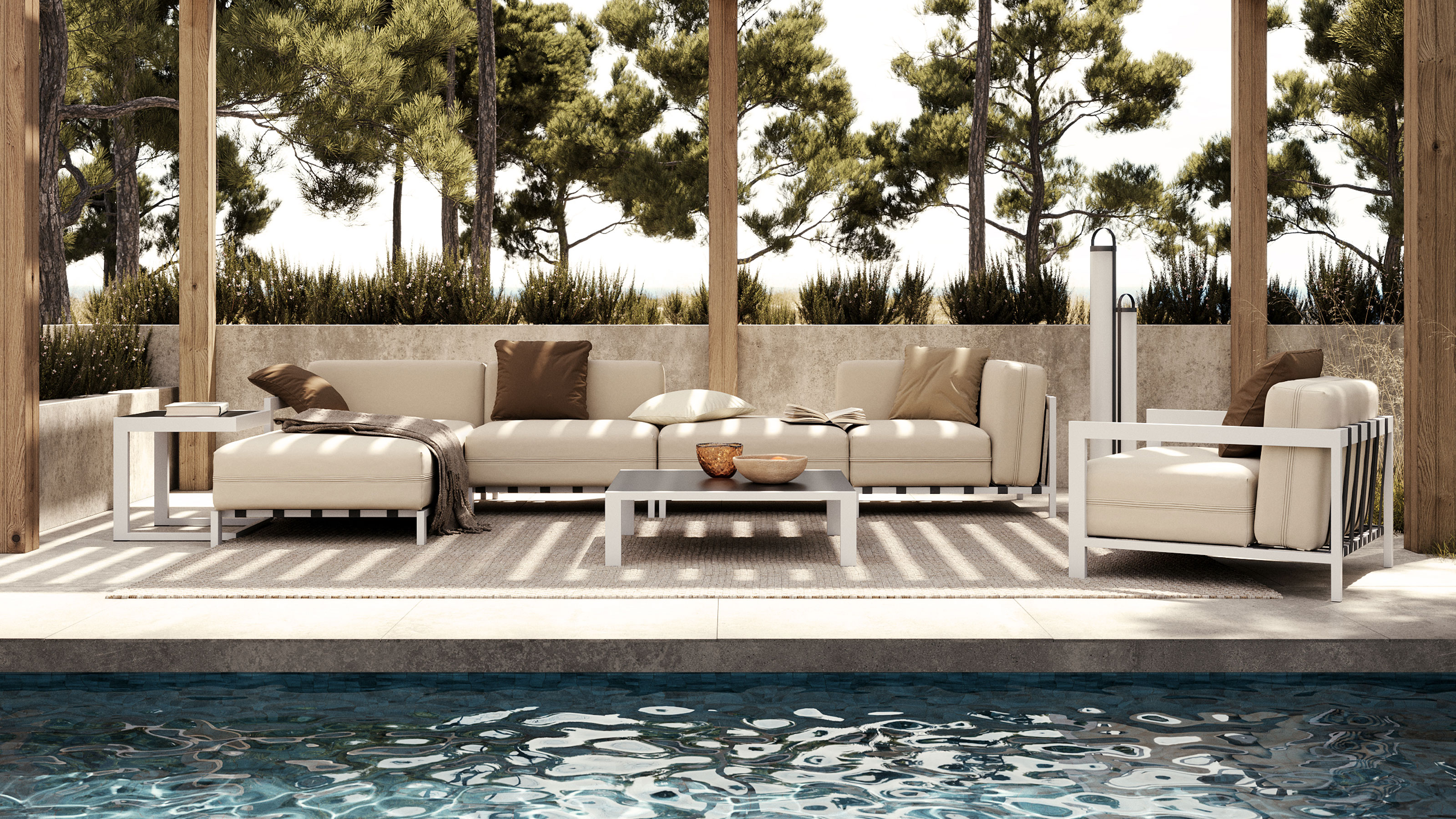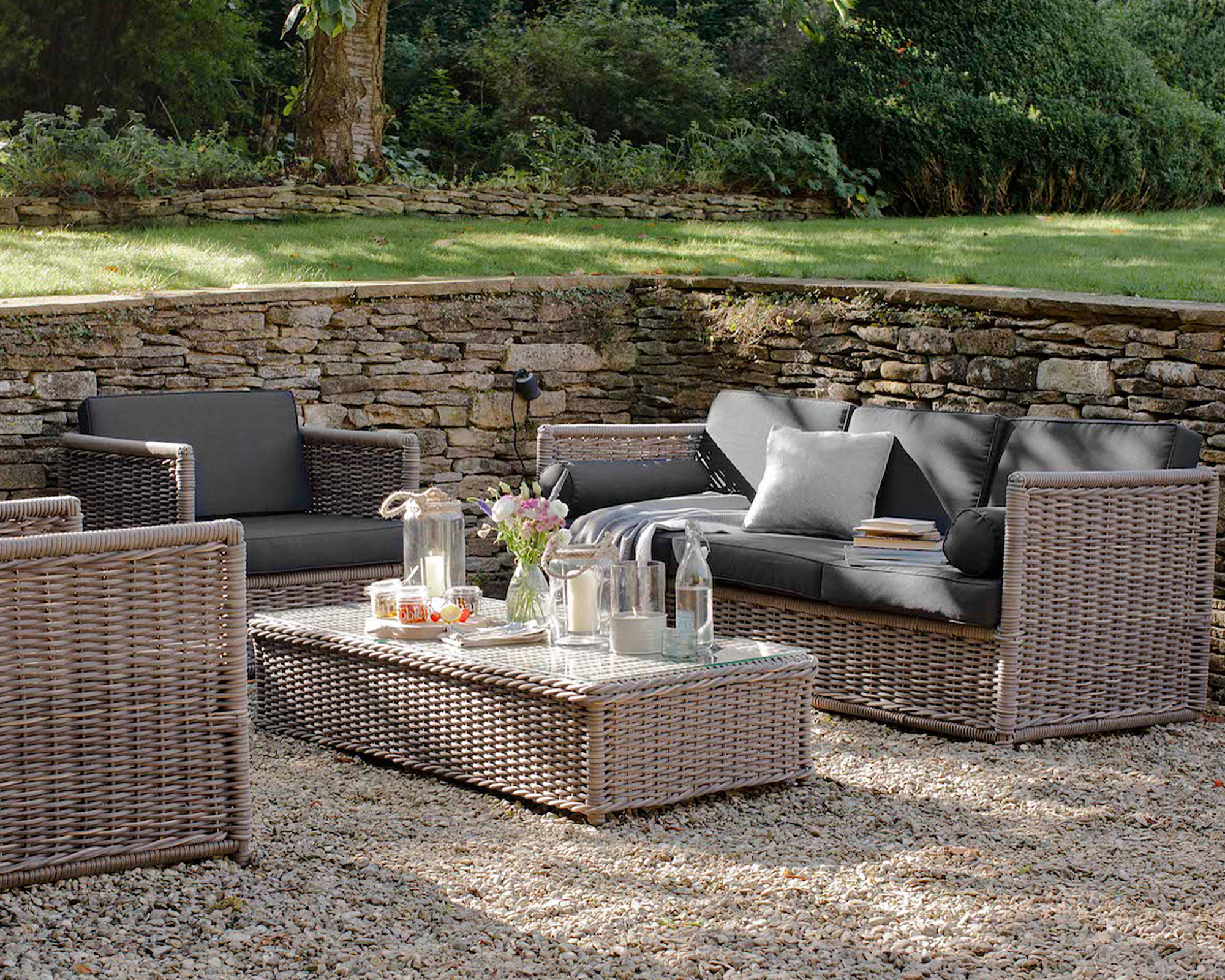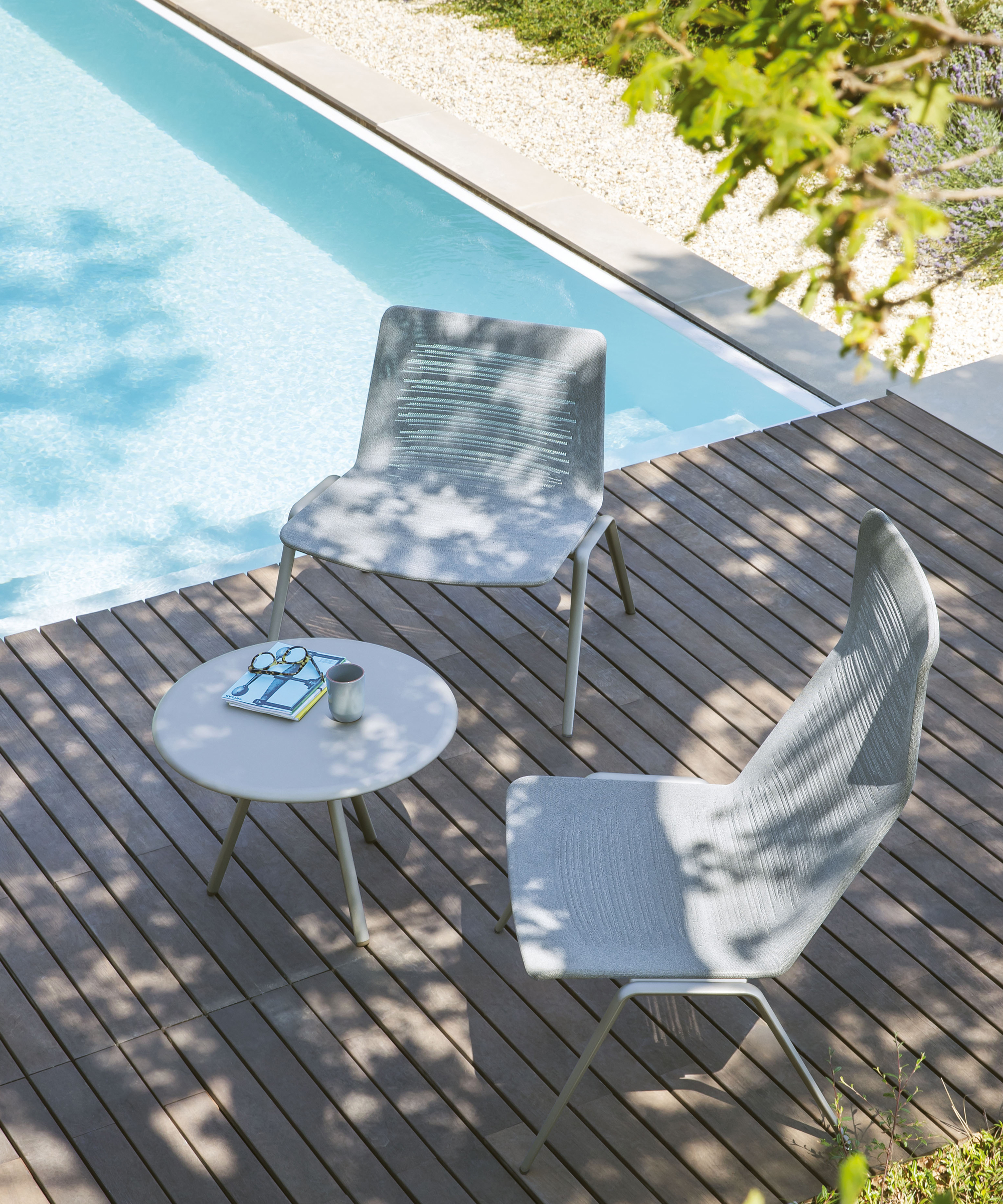Is outdoor furniture waterproof? And what to do if it's not
Is outdoor furniture waterproof? Here's what experts say

Is outdoor furniture waterproof? While some outdoor furniture sets are labeled waterproof, others aren't and you may be wondering whether that patio set you have your sights on will withstand rain and/or splashes from the swimming pool.
It's one thing when you've got a compact, foldable bistro set – if it's beginning to rust or discolor, you can simply store it indoors. But it's a different story if your patio set is large and includes a sofa.
Even if you've bought a set from one of the best outdoor furniture stores around, it might suffer if it's not waterproof. We've asked experts to give their top tips for telling whether yours is waterproof – and what to do if it's not.
So is patio furniture waterproof?
Is outdoor furniture waterproof? Here's how to tell
1. Check with the manufacturer
This is by far the most reliable way to tell if your outdoor furniture is waterproof. Rambabu Thapa, home decor and furniture specialist from Rustic Red Door, recommends reading the manufacturer's documentation included with your furniture very carefully: 'many brands will include a description of the furniture's level of waterproofing, so you can make an informed decision about whether it's suitable for your needs.'
Having said that, it's not uncommon to buy furniture (especially on eBay or if you're buying second-hand) and not get any information with what you've bought. If contacting the manufacturer) not the retailer or seller, mind) is an option, do so. If you really can't get hold of anyone, and 'your outdoor furniture isn't explicitly described as waterproof, likely, it won't hold up to extended periods of rain or snow. In this case, it's a good idea to take your furniture inside during bad weather conditions to prevent any damage from happening.'
To avoid the problem of buying a furniture set without proper labeling/documentation, stick to getting your patio set from a respectable outdoor furniture store.
Get small space home decor ideas, celeb inspiration, DIY tips and more, straight to your inbox!
2. Identify the material
Some manufacturer's may not provide information about the waterproof status of their outdoor furniture, but they should at least state what the furniture is made from. Aaron Lebowski, Certified Interior Designer at Juliei Salone, recommends particularly looking out for 'hardwoods, teak, acacia, resin wicker, and aluminum' as materials that have good water-resistant properties.
Avoid untreated softwoods like pine (pressure-treated is fine), and, above all, natural rattan or wicker. Beautiful as those materials are, natural rattan and wicker will not be able to withstand rain at all and should be kept indoors. However, some of the best rattan garden furniture is made from a synthetic alternative – this is safe to use in the rain.
Metal like steel and iron will rust unless painted with water-resistant paint.
3. Check the cushions
Brad Schweig of Sunnyland Outdoor Living points out that 'when most customers ask if the furniture is waterproof they are referring to the cushions and how quick they dry.' While most outdoor furniture frames will be able to withstand some rain, soft padding that hasn't been designed for the outdoors will not dry and eventually grow mold.
As Schweig explains, different manufacturers offer different solutions for cushions to make them better suited to the outdoors. Some cushions have reticulated foam filling, which means they 'will dry much faster than other cushions, although they're 'not as comfortable.'
'Some vendors use a waterproof bag to put around their cushion and others have different ways to either keep the moisture out or help them drain faster (such as vents under the seats).'
The best way to find out if your outdoor cushions are waterproof or not is to simply test them out in the rain or by the pool. If they're still wet the next day, they're not suitable to be left outside in the rain.

What should I do if my furniture isn't waterproof?
If you've discovered that your furniture is made from a non-waterproof material, don't panic. There are things you can do to make it more water-resistant. If you have wooden outdoor furniture, Lebowski recommends using 'linseed or tung oil to create a layer of protection, seal the wood with polyurethane, varnish, or lacquer, or waterproof the wood with a stain-sealant combo.'
Worried about those cushions? You can get waterproofing fabric spray (available on Amazon). 'Just make sure to do it when the furniture is clean and dry, and avoid spraying it close to plants or animals.'
Bear in mind that none of these methods will make your furniture completely waterproof, but it doesn't need to be. You're just making sure that the furniture repels most of the water, which is enough to prevent serious damage.

Will rain ruin my outdoor furniture?
Lebowski reassures readers that 'most outdoor furniture won't be ruined by the rain because they are made to be outside and resist the elements. However, if you have organic wicker furniture, you should keep it indoors because it can quickly become damaged with outdoor use.'
If your furniture is too heavy to take inside, invest in good-quality outdoor furniture covers like these from Amazon. And you may reconsider using your patio set right next to the pool if you have one.
Can you leave outdoor furniture outside all year?
The answer to that question depends a lot on the climate where you live. Thapa advocates for a cautious approach if you live in a climate where it rains and snows a lot: 'even weather-resistant furniture can become damaged if it is left out in the rain or snow for an extended period of time. If you live in a climate where rain and snow are common, it's important to take your furniture inside during bad weather conditions. This will help to preserve the life of your furniture and ensure that it remains to look its best for years to come.'
In other words, yes – if you live in a warm, mild climate where it doesn't rain too much. If you live in a climate with harsh winters, it's definitely a no.
Anna is a professional writer with many years of experience. She has a passion for contemporary home decor and gardening. She covers a range of topics, from practical advice to interior and garden design.